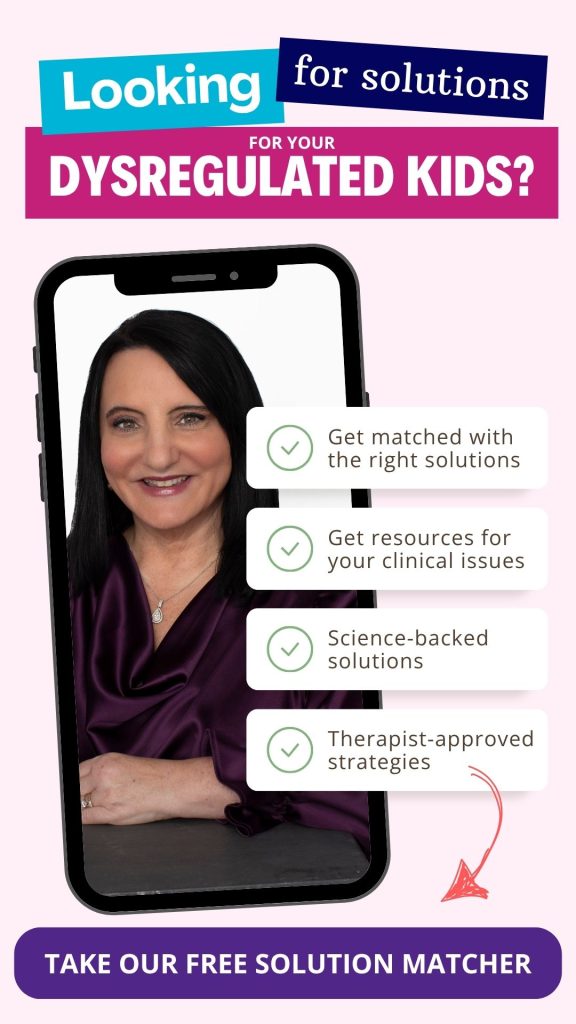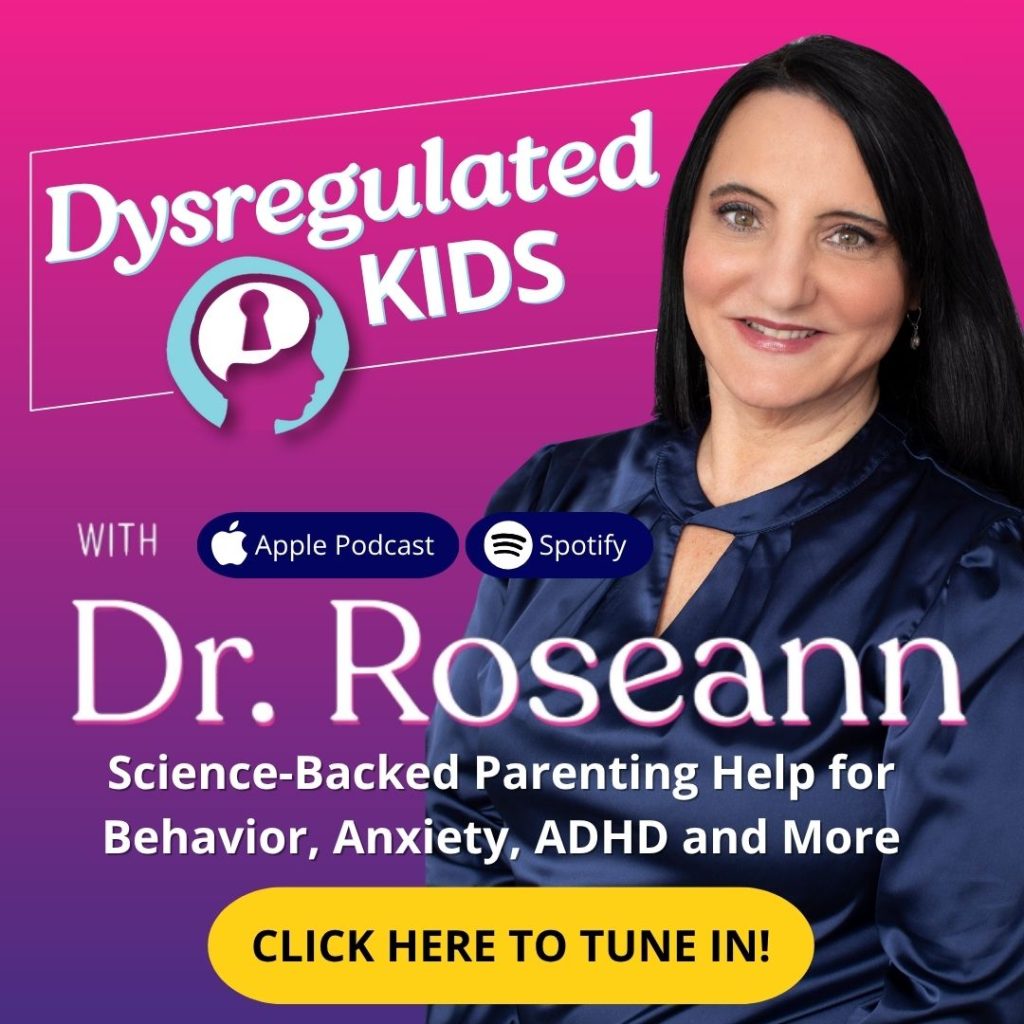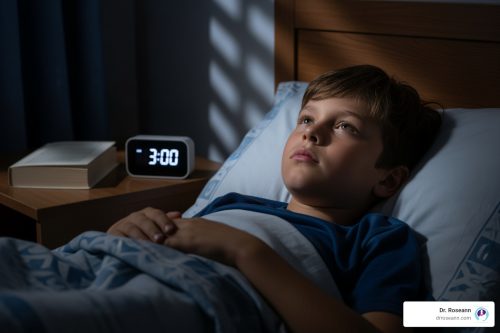If you’ve ever felt judged, dismissed, embarrassed, or just plain exhausted trying to explain your child’s behavior to someone who doesn’t get it—you’re not alone.
Talking about dysregulation isn’t easy, especially when others can’t see what’s really going on beneath the surface. But your child’s struggles are real—and so is your effort to advocate for them.
In this blog, you’ll learn how to:
- Explain dysregulation in simple terms
- Speak with empathy, not overwhelm
- Talk to others with calm confidence
- Help your child feel seen and supported
What does “dysregulation” really mean?
In practice, dysregulation means intense emotional or behavioral responses that feel out of proportion. It’s not willful tantrums—it’s a dysregulated brain.
When a child is dysregulated, their nervous system shifts into a survival mode—fight, flight, or freeze, even when there’s no real danger. That could look like yelling, hitting, running away, hiding under a table, or totally shutting down. They aren’t trying to be “bad”, their brain and body are simply overwhelmed and doing their best to cope.
- Emotional dysregulation means difficulty calming down when upset (Paulus, 2021)
- It often shows up with low frustration tolerance, outbursts, or frequent crying.
How can I explain my child’s dysregulation to family or friends?
When sharing with loved ones, empathy and simplicity go a long way.
It helps to reframe dysregulated behavior as neurological, not intentional. Instead of focusing on labels or discipline, explain that your child’s brain becomes overwhelmed and slips into fight, flight, or freeze mode when stressed. This makes emotional regulation difficult in the moment—and it’s not about being defiant or disrespectful.
- Use everyday analogies, like: “It’s like his brain overheats really fast, and he can’t cool it down on his own.”
- Emphasize that behavior is communication, and dysregulation often signals stress, sensory overload, or frustration
- Keep your tone calm and compassionate to invite understanding, not judgment
By giving others this lens, you help them shift from blame to support.
What should I tell my child’s teacher or school staff?
When speaking with your child’s teacher or school staff, clarity and partnership are key.
Start by describing how dysregulation shows up for your child—whether it’s emotional outbursts, difficulty with transitions, or shutting down in class. Help the school see that these are not behavior problems, but signs that your child’s brain is overwhelmed and needs support, not punishment.
- Share specific triggers and what helps your child calm down
- Recommend simple supports like visual schedules, transition warnings, or a calm corner
- Ask for consistency in responses across school and home for better regulation
Collaborative communication leads to better outcomes, especially when the focus is on understanding and proactive strategies instead of discipline.
How do I advocate for dysregulation in formal settings (IEPs, doctors)?
Meeting with professionals—whether it’s for an IEP meeting, a doctor’s visit, or a therapy intake—can feel intimidating. But you are the expert on your child, and your voice matters.
Here’s how to communicate effectively and advocate for the right support:
- Describe observable behaviors like frequent emotional outbursts, difficulty with transitions, shutdowns, or attention struggles
- Explain the impact on learning or daily functioning, especially in school settings
- Use calm, clear language: “He becomes overwhelmed in noisy environments and can’t focus after that.”
- Mention evidence-based supports like CBT, mindfulness, and family-supported strategies
- For IEP meetings, ask for accommodations that address regulation—like sensory breaks, a calm-down space, or help transitioning between activities
- Gently request assessments: “Do you think an evaluation for emotional regulation or executive functioning might help us support her better?”
Schools and providers want to help—but they need your insights to tailor support to your child’s unique needs. You’re not asking for favors. You’re asking for the right fit for your child’s brain.

When is it helpful to use strength‑based language vs diagnostic terms?
Not everyone will immediately understand dysregulation—and that can be hard when you’re already doing your best. But you can protect your child and your peace.
- Stay calm and confident. Gently remind yourself: It’s not bad parenting—it’s a dysregulated brain.
- Reframe blame into education. Instead of reacting defensively, try: “This is a neurological challenge, not a discipline issue.”
- Set clear boundaries if the conversation becomes shaming or dismissive—protecting your mental health is just as important
- Be consistent in your language so your child hears a message of hope, not shame
When you speak from a place of compassion and clarity, it not only helps others understand—it shows your child that they are worthy of support, no matter how they’re feeling.
By talking about dysregulation calmly, you help create understanding and support.
It’s gonna be OK. You’re not alone on this journey.
Parent Action Steps
FAQs
How do I start the conversation without sounding defensive?
Begin with an I‑statement: “I want to explain how dysregulation shows up in her—and what helps.”
Should I mention diagnoses like ADHD or DMDD or just say dysregulation?
Use diagnostic terms when talking with clinicians or school staff—but for family, focus on dysregulation and strengths first.
How long will it take for others to understand?
It depends—but consistent, calm language helps people adjust more quickly. Repetition over time builds empathy.
Citations:
Paulus, F. W., Ohmann, S., Möhler, E., & Popow, C. (2021). Emotional dysregulation in children and adolescents: A challenge for the future. Frontiers in Psychiatry, 12, 661440. https://doi.org/10.3389/fpsyt.2021.661440
Zeman, J., Cassano, M., Perry-Parrish, C., & Stegall, S. (2006). Emotion regulation in children and adolescents. Journal of Developmental & Behavioral Pediatrics, 27(2), 155–168. https://doi.org/10.1097/00004703-200604000-00014
Blair, C., & Raver, C. C. (2015). School readiness and self-regulation: A developmental psychobiological approach. Annual Review of Psychology, 66, 711–731. https://doi.org/10.1146/annurev-psych-010814-015221
Dr. Roseann Capanna-Hodge is a licensed mental health expert that is frequently cited in the media:
- Today How to keep your kids physically and mentally afloated
- Little Sleepies How to Practice Mindfulness with Your Kids
- Well + Good The Best Lego Sets for Adults To Unleash Creativity and Practice Mindfulness
Disclaimer: This article is not intended to give health advice and it is recommended to consult with a physician before beginning any new wellness regime. *The effectiveness of diagnosis and treatment vary by patient and condition. Dr. Roseann Capanna-Hodge, LLC does not guarantee certain results.
Are you looking for SOLUTIONS for your struggling child or teen?
Dr. Roseann and her team are all about science-backed solutions, so you are in the right place!
©Roseann Capanna-Hodge










